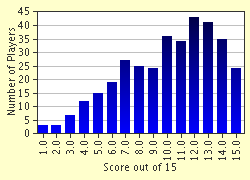Quiz Answer Key and Fun Facts
1. The early music of the medieval church existed in the form of Gregorian chants. These chants are monophonic and:
2. The unique sound of medieval music, sacred and secular, stems from the unusual scales used. These scales are called:
3. An example of Renaissance secular music, this type of music is designed for mixed chorus and is usually about love.
4. This style of sacred Renaissance choral music is set to a sacred Latin text. The text used is different than that found in the ordinary of the mass.
5. The concerto grosso form was used in much of the music written in the style of the Baroque period (1600 - 1750). The first and last movements of the concerto grosso are often in _____________ form.
6. This unique feature of Baroque music is typically played on the harpsichord and doubled on the 'cello.
7. Both opera and oratorio are products of Baroque creativity. Although both tell a story through music, the oratorio has no:
8. In the Classical period of music (1750 - 1825), much of the music was written in this form. It is used in the opening movement of classical symphonies, sonatas and string quartets and often in the fast concluding section as well.
9. Ludwig von Beethoven (1770-1827) bridges the Classical and Romantic periods of music. In his 9th Symphony, he makes musical history with his use of:
10. Romantic period composers (1820-1900) composed in highly individualistic styles. Unique genius and personality are often evidenced in music that deals with subjects of:
11. Bedrich Smetana's "The Moldau" is an example of Romantic:
12. Early 20th Century music includes the transition from the romantic style into the modern. Part of the transition includes this type of music that makes use of unusual scales and a feeling of vague tonality. Composers of this music often based their work on symbolist poetry.
13. One of the most popular styles of early 20th century music is jazz. Jazz is rooted in improvisation and is frequently presented in this form.
14. An evolutionary branch of opera and operetta, the "musical" is typically less vocally demanding and uses more spoken dialogue. Several modern composers of musicals lean more toward the operatic than the musical stage style in some of their work. These composers include:
15. The roots of 20th century rock music are most directly traced to these styles.
Source: Author
belle_a_cello
This quiz was reviewed by FunTrivia editor
bullymom before going online.
Any errors found in FunTrivia content are routinely corrected through our feedback system.


